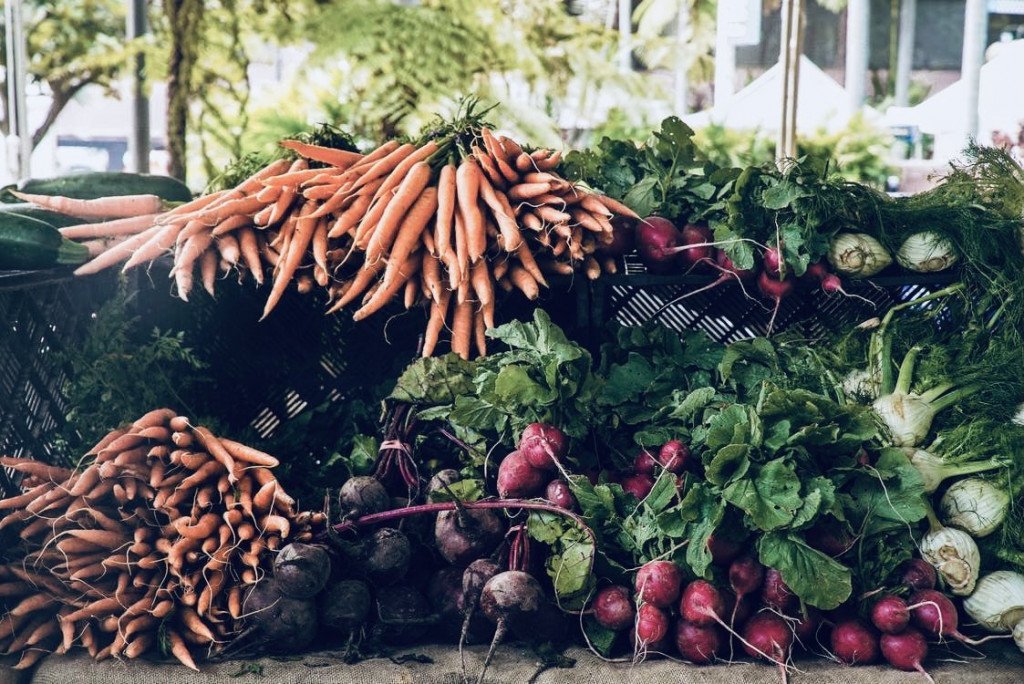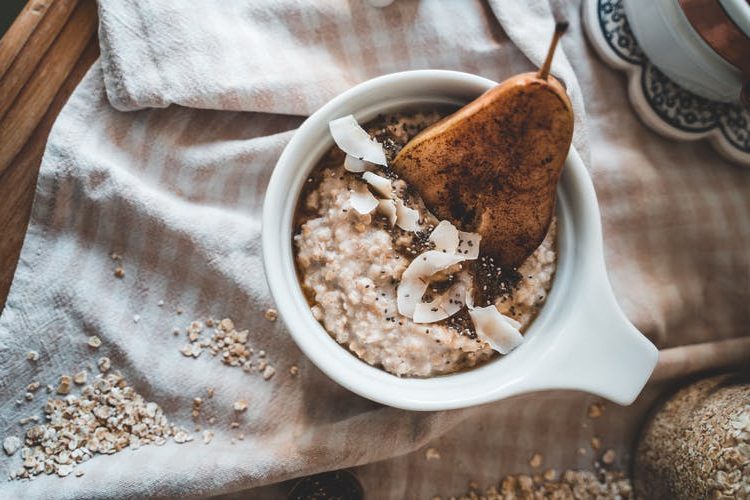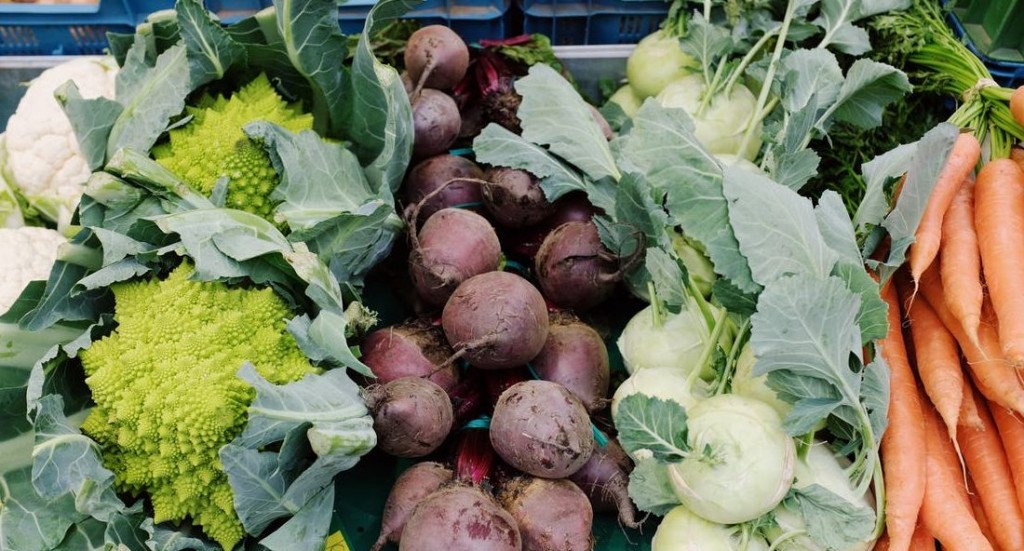The concept of eating seasonally is not a new one. As little as 100 years ago before the arrival of supermarkets, most people grew their own food. They knew which fruit and vegetables would grow best in their area, the best time to plant and harvest and how to use what was available.
These days, we are spoilt for choice with an abundance of fruit and veggies available at our supermarket. However, the downside to this, is that much of this food is grown out of season and is therefore unable to follow their natural growing and ripening rhythms.
The use of chemicals, gases and certain heat processes are used in order to force ripen and some produce is even coated with an edible film to protect it.
As the weather changes, often our eating habits and food preferences change. Likewise, as the seasons change, different produce begins circulating through our supermarkets, local grocers and farmer’s markets.
What is seasonal food?
Seasonality refers to the times of year when the harvesting (or picking) of fruit or vegetables is at it’s peak. And eating seasonally means eating produce that is grown locally and consumed around the time that it is harvested
Locally grown, seasonal food has the biggest benefit for the planet, and studies show that it has amazing benefits for our health.
Whilst growing our own food is the best option, depending on our lifestyle, this isn’t always possible. Therefore the next best thing is to consider what is in season when purchasing food and eating accordingly.

The Benefits of Eating Seasonally
There are a variety of reasons why eating fresh, seasonal produce is better for us as individuals, as well as for our greater community and environment. Here are some of the benefits:
1. Nutrient density
Food that is grown and consumed during their appropriate seasons are often more nutritionally dense. They have been able to grow in line with their natural biological process and allowed to ripen naturally from the sun. This means the produce is fresher, tastes better and has the highest amount of nutrition, antioxidants and phytonutrients.
Produce loses nutritional value the longer it is stored or sits while being transported. Eating seasonally will also help you mix up the variety of fruit and veggies you eat, which is one of the best ways to benefit from all the phytonutrients they provide.
2. It tastes better
Have you ever been lucky enough to taste tomatoes grown in your own backyard or perhaps a neighbour’s garden? They are bursting with favour and much sweeter than the ones you buy at the supermarket. Big corporations often use selective breeding to mass-produce desirable characteristics of fruit and vegetables and to achieve better yields (and therefore profit). However the downside is that it also leads to tasteless produce.
3. More cost effective
Seasonal produce is often cheaper because it is at it’s peak of supply. Therefore not only is it fresher and tastier, but it is available in abundance and at a much lower price! Look out for supermarket specials or hit your local farmers markets and talk to the growers about what’s in season
4. Supports local growers
Purchasing directly from farmers, at local grocers or at farmers markets helps to create demand for freshly harvested, seasonal produce and financially supports local farming, communities and resources,
Local growers can also tell you how the food was grown so you have the opportunity to ask what practices they use to raise and harvest the crops. When you know where your food comes from and who grew it, you know a lot more about your food.
5. It is better for our planet
Did it come from your local farmer? Or did it drive across the country, or perhaps arrive by airplane?
There is no denying it. Long-distance travel not only depletes the nutritional value of our food, but we are paying for it in fuel emissions.
Purchasing seasonal, locally grown food not only saves you money but is also has less of an environmental impact. Imported, out-of-season produce requires much more storage and transportation than local produce and generates more greenhouse gases.
Tips on eating seasonally
Seasonal eating is really such a simple food philosophy. And yet somehow due to decades of operating in such a commercialised manner, our food and way of eating has become quite complicated. Here are some simple ways to get you started on your way to eating locally and with the seasons:
-
Become aware:
Do some research and build up your knowledge. We love the Seasonal Food Guide of Australia as a resource. While you are out shopping, be sure to check for signs and labels that indicate that the produce is imported from overseas and seek out labels that say ‘grown in Australia.’ If it’s not local, it’s not seasonal.
-
Change up your habits:
Changing the way you eat just requires a little bit of habit change. Try taking some small steps to create a new habit, and once it is ingrained, becomes automatic behaviour. Perhaps start by choosing one new vegetable per week, or pick one new recipe to try once a week.
-
Make a plan:
Have a list of what is in season. There are lots of resources online where you can find downloadable lists of what is in season. Once you have your list of what is in season, and you can start planning meals around those fruit and vegetables. Planning out your meals at least 4-5 days in advance is a good start.
-
Don’t make it complicated:
Keeping it simple is key. Try out a new ingredient or a recipe each week and create a list of recipes that you can have on rotation. By taking a little time to plan out your meals according to what is in season, you can create a shopping list based around it. Simple!
-
Buy Fresh:
Check out your local farmers market or support your local green grocer. *Tip* get to know the people behind your food, they have great knowledge of seasonality and have great ideas on how to use their produce in new and interesting ways.
-
Shop Smart:
Check out local food co-ops or produce delivery services. They are out there! Alternatively, why not start growing your own produce bit by bit? Plant some balcony herbs or join a local community garden.
Seasonal Fruit in Winter
Right now, fruits such as apples, pears, oranges, lemons, kiwifruit, are in season.
- Now is a good time to top your warm morning porridge with fresh or stewed pears or apples
- Try adding sliced pear or orange segments into your warm winter salads.
- Add lemon to herbal tea or to dressings to add flavour food.
- Make smoothies! Freeze your fruit in excess and blend from frozen.
- Create homemade apple oat muffins to pop into the kid’s lunchboxes.
Seasonal Vegetables in Winter
Vegetables such as carrots, cauliflower, spring onion, beetroot, pumpkin, cucumber and potatoes and broad beans are in season.
- Making your own fritters using chickpeas, pumpkin, potato and spring onion, and parsley.
- Creating a roast veggie salad with pumpkin, beetroot, parsnips tossed with some spinach with extra virgin olive oil and a squeeze of orange to taste.
- Bulking up sandwiches and wraps with spinach and left over roast veggies.
- Pairing snow peas, carrot sticks, celery with broad bean dip for a nutritional snack.
- Make carrot noodles for a nutrient dense pasta alternative.
As you can see, eating seasonally will not only benefit your wallet and the nutritional needs of your family, but also benefit local farmers and reduce the impact of our food choices on the environment!
Eating seasonally doesn’t have to be hard work. It just requires a few little tweaks to your usual way of doing things and it is so much better for your own health and the health of the environment.
Resource : Seasonal Food Guide and Mind Body Green



